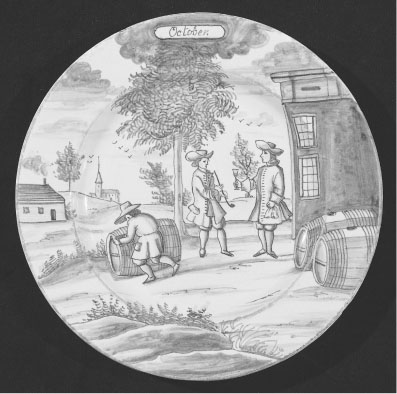Netherlands, The is located in northwestern Europe and is bordered by the North Sea to the north and west, Belgium to the south, and Germany to the east. It has a maritime climate favorable for growing brewing barley, which takes place mainly in the southwest and northeast of the country. There are four maltings within Netherlands’ borders, and the Netherlands produces approximately 4% of Europe’s (and just over 1% of the world’s) malt. Of this production about one third is exported to other European countries such as Germany, Belgium, Greece, and France, and the rest is used nationally. Hop farming started in Northern-Drenthe, Brabant, Limburg, and Zeeland around 1450, but over the centuries foreign competition and low prices forced most farmers to switch over to more profitable crops and it totally disappeared by 1905. Recent interest in regional produce has resurrected hobby-scale hop fields in Schijndel (2005) and introduced commercial farming in Reijmerstok (1997) in the most southern tip of south-Limburg.

Calendar motif of a tin-glazed, 18th-century Dutch Delftware plate. The brew year has always started on the first day of October, after the hop and barley harvests are safely stored away. This is when brewers purchase raw materials and roll out barrels for the coming brew season. private collection/© charles plante fine arts/the bridgeman art library international
Derek Walsh
Records of taxes levied on beer appear as early as 1112, although brewing was already taking place in the 11th century. Records from 1350 indicate that brewers typically used a ratio of 75% oats to 25% wheat malt to brew their beer. Barley malt appeared from 1400 onward but it took until 1550 before it made up an average of more than 25% of the typical three-grain grist. Gruit, or gruut, a mixture of bog myrtle and local herbs, was the only preservative used to flavor beer and there are records of taxation on this mixture dating from 1274.
Many of the original beer styles brewed in the Netherlands disappeared with industrialization and the entrance of lager brewing in 1864. Ten years later there were 489 breweries in the Netherlands and in 1914 there were 359. The major change came in 1926 when a new law making it illegal to brew low alcohol “small” beers was passed. The result was a decimation of the remaining ale brewers who, for whatever reason, were unable to switch over to lager production. In 1930 only 148 brewers remained and the total continued to spiral down until an all-time low of 16 was reached in 1980. Together these brewers made fewer than 10 beer styles of which more than 99% sold was pilsner.
The turnaround came in 1980 with the founding of beer consumer organization PINT, immediately followed by an employee buy-out of the SKOL brewery in Arcen. So many small independent brewers joined the revival that in less than 20 years the pilsner monoculture turned into a specialty beer oasis. There are now 80 breweries and contract brewers in the Netherlands that brew no fewer than 60 styles of beer. Pilsner, brewed by four multinationals, still accounts for 90% of the beer sold, but its market share continues to dwindle in favor of specialty beers.
Out of all the styles available, two remain that can be considered to be Dutch: Oud Bruin and Dort.
